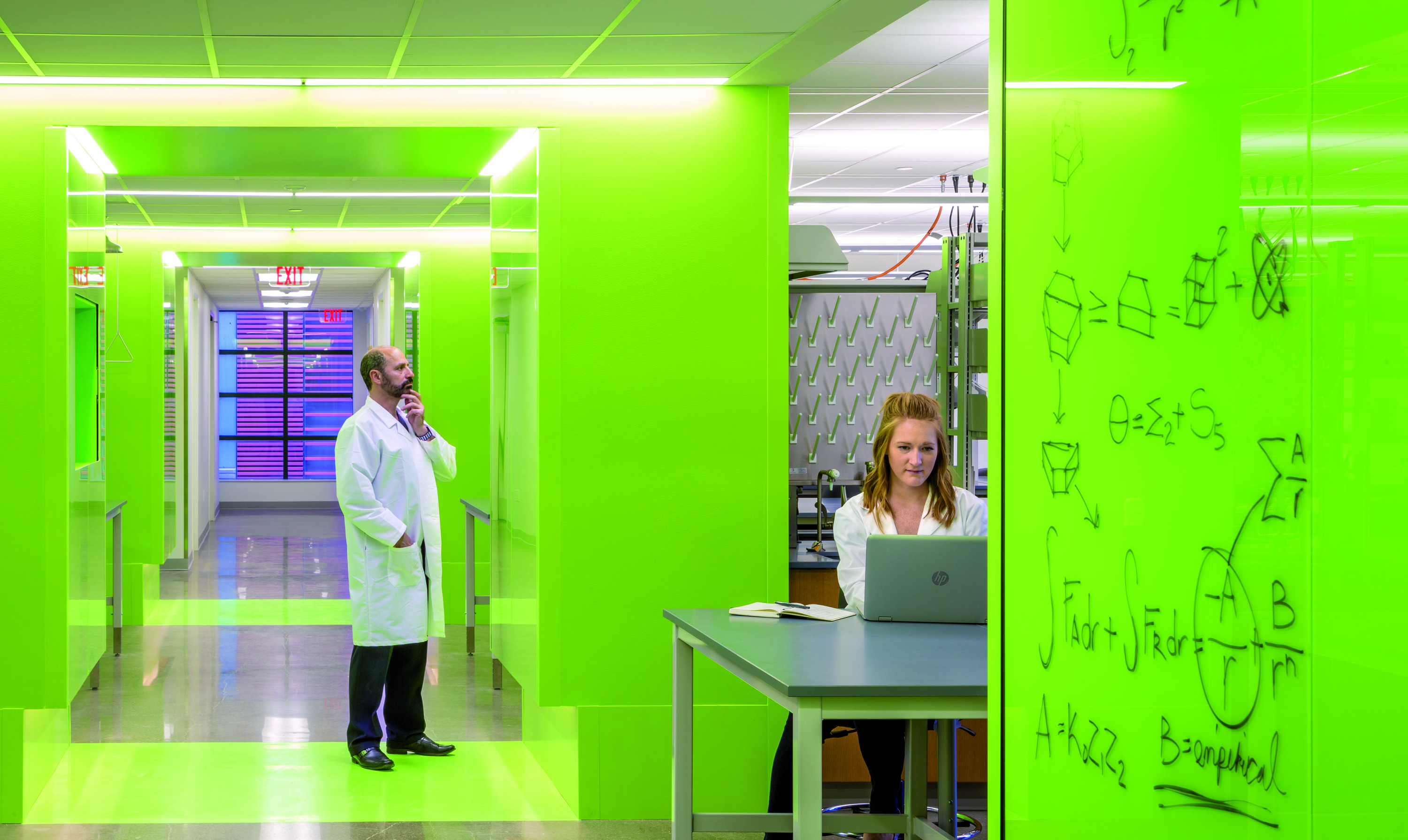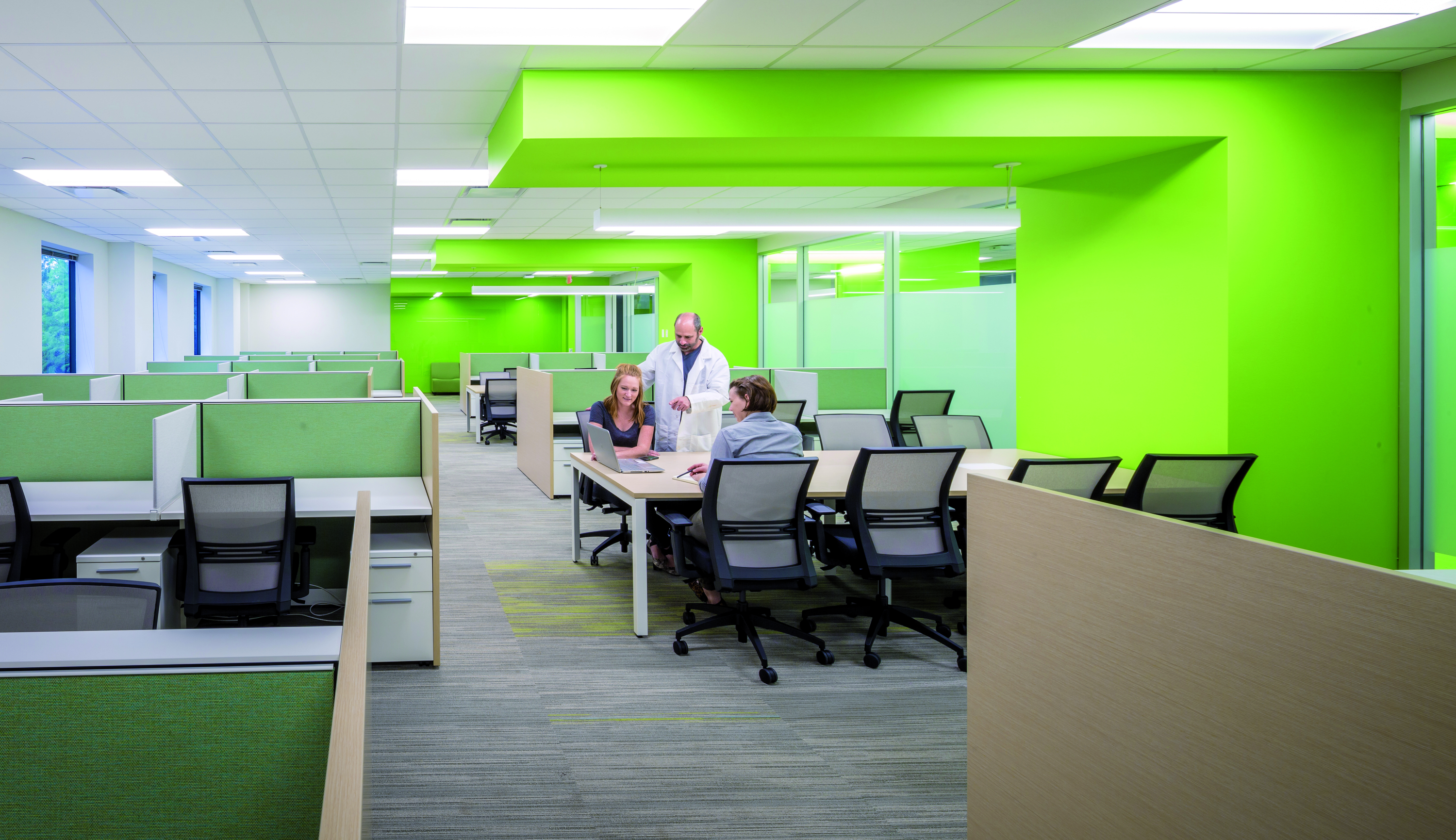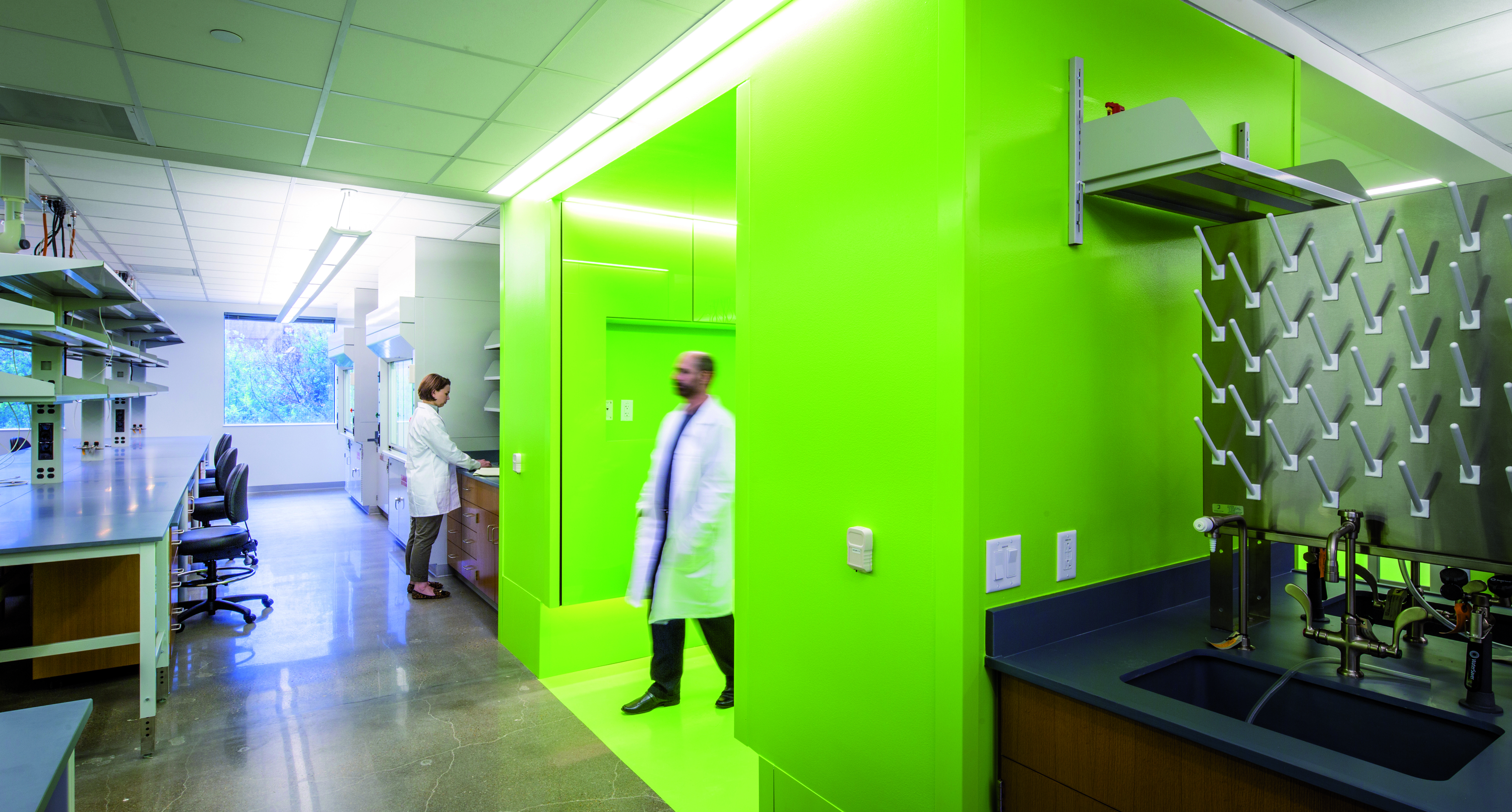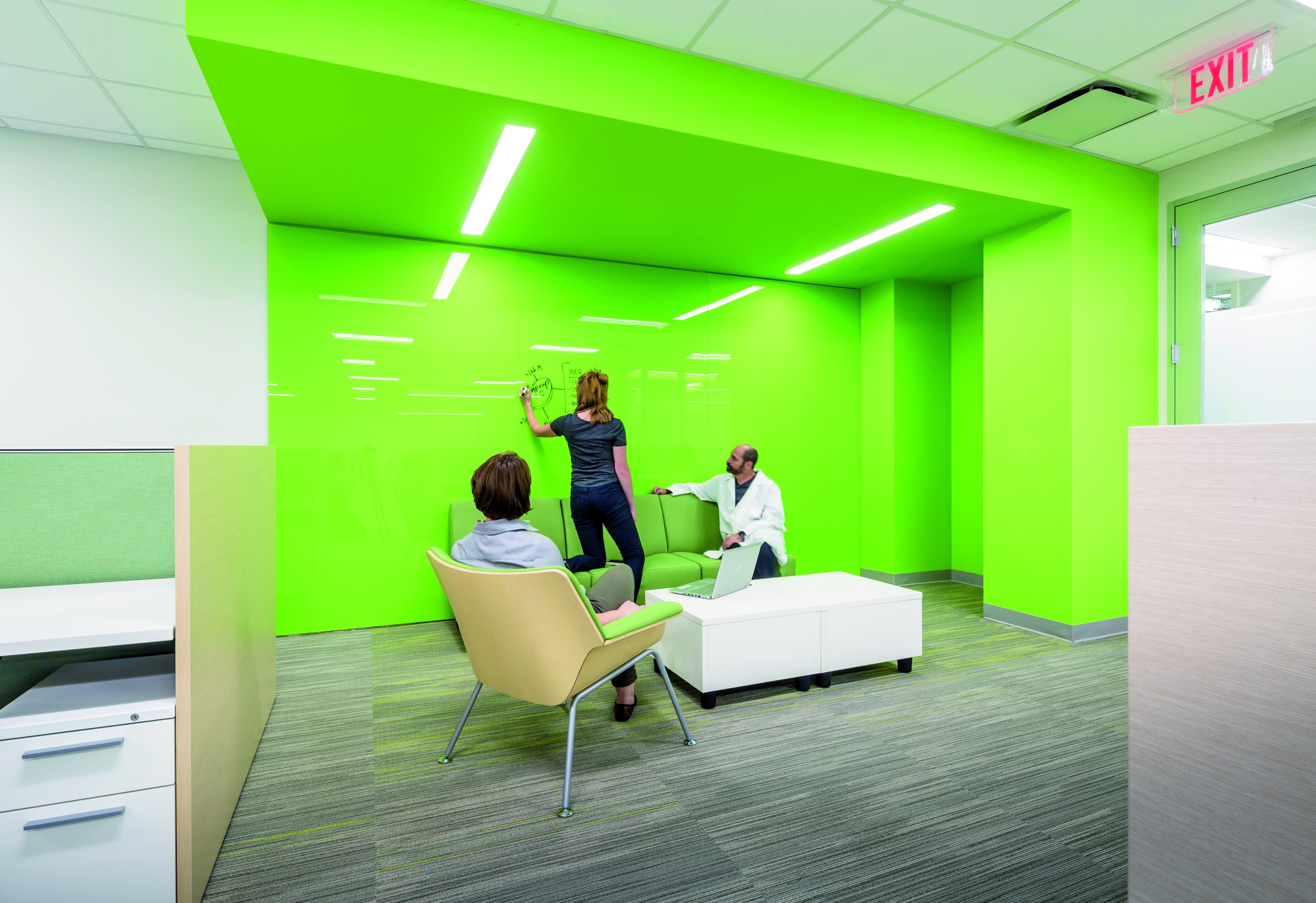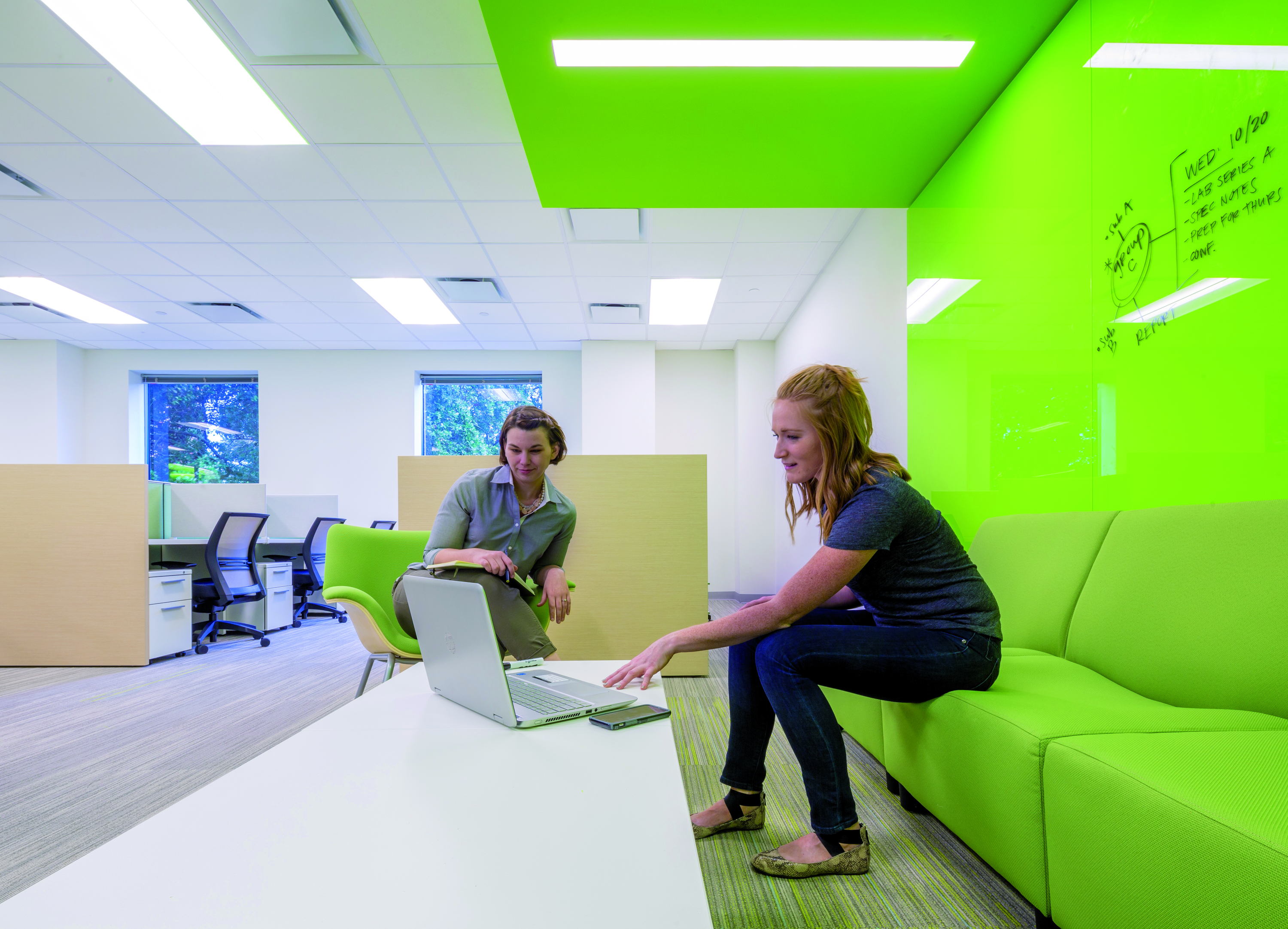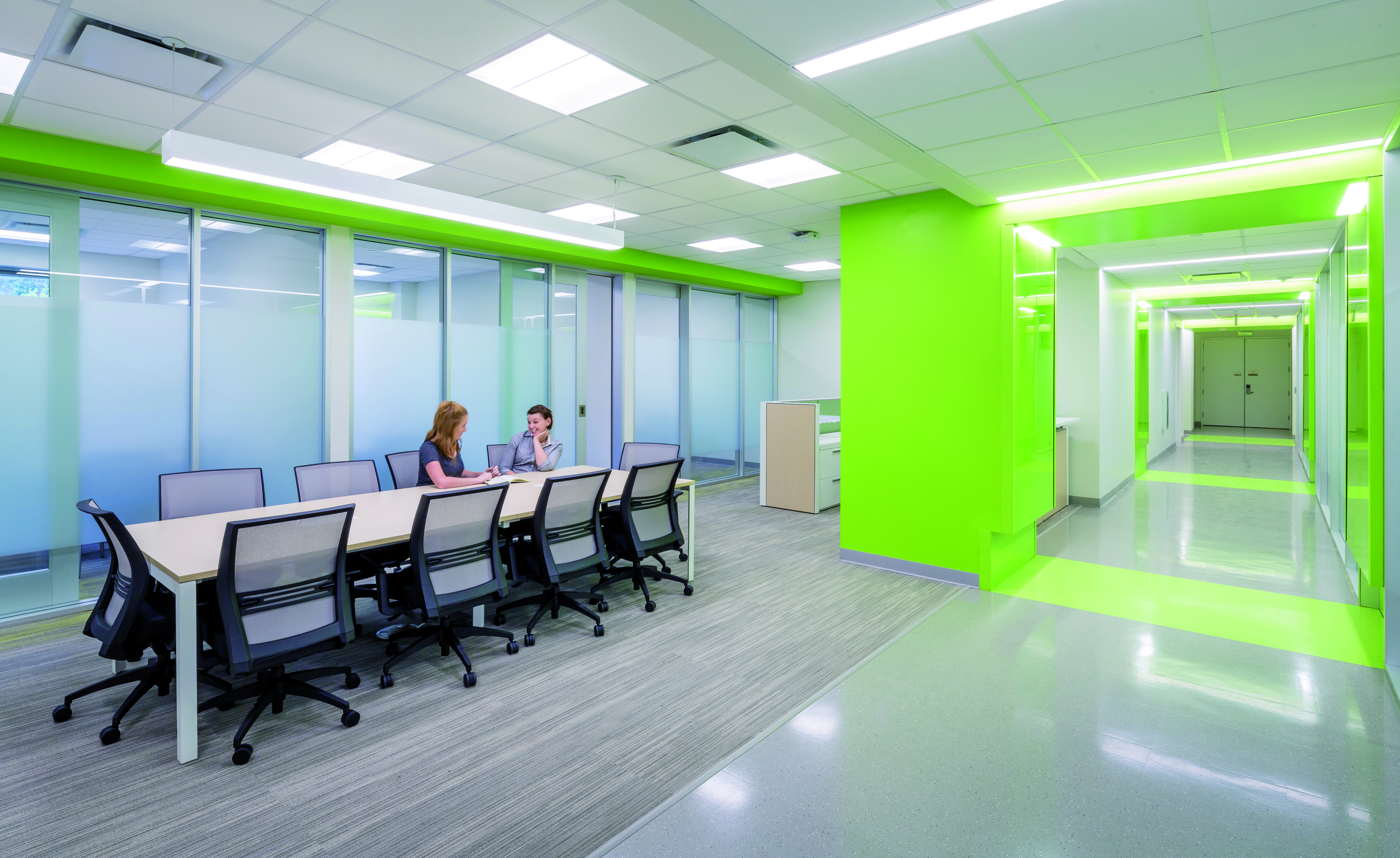Maximizing resources for a leading university
Rice University’s New Emerging Science & Technology (NEST) Center is a renovated lab housed within the George R. Brown Bioengineering Lab, a building that took home R&D magazine’s “Lab of the Year” award in 1992. Challenged to design a space that would better foster “the business” of research, NEST represents a radical departure from existing lab design at Rice University.
Early on, the client determined that two departments would be housed in this space, but rather than claim individual territories, we co-located the departments to maximize lab space and promote interdisciplinary research. We further maximized lab space by clustering all bench and support space into one wing and all work areas in a perpendicular wing, in a completely open floor plan, thereby reducing the amount of dedicated corridor space needed. Marking collaboration zones in the laboratory areas are collaboration portals, which are defined by bright green, writable glass panels. This allows users to walk mere feet from their bench to a large writing area where multiple people can gather.
Compared to the lab that previously occupied the space, NEST delivers 20% more lab area, 30% more bench space and a 9.5% increase in student/researcher efficiency.
We are sharing resources, and students and faculty from different groups can collaborate on bold new projects. We have established, decorated faculty rubbing elbows with emerging young faculty, and they will all be better researchers because of it.
Ned Thomas, Dean, George R. Brown School of Engineering, Rice University

